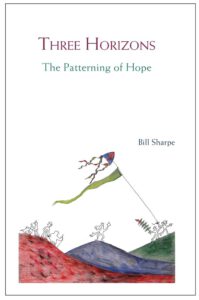Before the summer vacation, I participated in a webinar about ‘safe money’, which would go into the merits and demerits of central bank digital currency (CBDC). I wanted to find out about the similarities and differences between digital currencies like Bitcoin and CBDC’s and how CBDC’s fitted into the concept of ‘safe money’.
I regret to say that the webinar did not contribute to my understanding. Therefore I decided to read, or listen, on the subject. First I listened to Layered Money, by Nik Bhatia, which introduced the idea of Bitcoin as a successor to the gold standard. This was a whole new concept to me, since, until then, I considered digital currencies to be investment vehicles. This is not to say they are not, but to consider them as an equivalent as gold from a monetary perspective was a whole new insight.
I must admit I also have trouble understanding why gold has been a standard for such a long time, and since Layered Money is only a little above a four hour listen, the book did not elaborate on that. That is why I picked up another book.*)
This book shed more light on it: it is all about reserves. You and me, the general public, are not likely to have the need for ‘reserves’ as do banks and other financially strong economic agents, who feel the need to store away wealth for a longer time, or who have to keep wealth in reserve in order to be able to meet demand deposits. And what is the best vehicle to store wealth according to the book? Hard money.
Now, hard money is what I call a ‘grey barrier’-concept, since it is relative to money that is – potentially – not hard. Money is hard when its stock is relatively stable. This means that inflows are predictable and small relative to the money already in stock. Money, in this context, should be seen broadly. The book shed a new light on the use of beads, shells or stones as hard money.
When governments or central banks, or the banking system, have the possibility to create money at will, national currencies are not ‘hard’. And when there is a threat that the banking system collapses, like there was in 2008, people and institutions with wealth to store, fly away from national currencies into hard money, like gold.
Gold is considered hard money, because there is a limited stock of gold above the crust of the earth and in the crust of the earth. Mining it is costly, so the inflow of gold relative to its ‘above the crust of the earth’-stock, is small. Which is where the comparison with Bitcoin comes in. Bitcoin is mined too, at a predetermined schedule. Each mining period Bitcoin gets more scarce, which makes mining more difficult. Expectations are that, while the value of Bitcoin is still volatile, this will eventually stabilize.
Although I did not finish the book – see the note below – I felt the need to share this with you, because I find it most ironic: the successor of gold in the monetary system is at least as detrimental to the earth as its predecessor. Is this progress?
henny@21steconomics.org – You can also find me on LinkedIn
Image by Liam Ortiz from Pixabay
*) Although this book provided me with some insights in the belief that Bitcoin could be the new gold standard, I chose not to share the title and author with you, since the author lowered himself to attack the personal life of John Maynard Keynes in an attempt to disqualify him, instead of restricting himself to Keynes’ economic theory.




